“SCIENCE BEHIND GEMSTONES”
Instruments & Books
 Microscope
MicroscopeRs. 1,00,000.00
Historians credit the invention of the compound microscope to the Dutch spectacle maker, Zacharias Janssen, around the year 1590. The compound microscope uses lenses and light to enlarge the image and is also called an optical or light microscope (vs./ an electron microscope). The simplest optical microscope is the magnifying glass and is good to about ten times (10X) magnification.Instrument that produces enlarged images of small objects, allowing them to be viewed at a scale convenient for examination and analysis. Formed by various means, the image is received by direct imaging, electronic processing, or a combination of these methods.
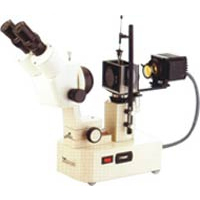 Immersion Scope
Immersion ScopeRs. 75,000.00
When light passes through different media, such as from glass to air, it is refracted, and different wavelengths of light bend at different angles. Therefore, as white light passes across several refractive surfaces the waves spread out and the edges of objects appear blurred. Resolution is defined as the minimum distance between objects that can be visually detected. With dry lenses resolution is unsatisfactory at final magnifications above 400x. A drop of oil with the same refractive index as glass, placed between the specimen and the objective lens, eliminates two refractive surfaces. Final magnifications of 1000x or greater are attainable, with satisfactory resolution.
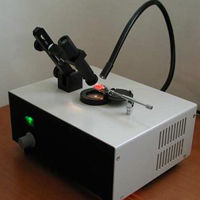 Desk Prism Spectrosscope
Desk Prism Spectrosscope Rs. 52,000.00
Lorem Ipsum is simply dummy text of the printing and typesetting industry. Lorem Ipsum has been the industry's standard dummy text ever since the 1500s, when an unknown printer took a galley of type and scrambled it to make a type specimen book. It has survived not only five centuries, but also the leap into electronic typesetting, remaining essentially unchanged. It was popularised in the 1960s with the release of Letraset sheets containing Lorem Ipsum passages, and more recently with desktop publishing software like Aldus PageMaker including versions of Lorem Ipsum.
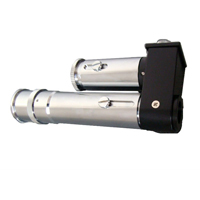 Prism Specroscope
Prism SpecroscopeRs. 24,000.00
The spectroscope is a tool for examining which parts of white light are absorbed by a gemstone (as well as by other materials). Materials can absorb parts of the electromagnetic spectrum, and when the absorbed parts fall within the visible range, that absorbed part will influence the color of the material. When a gemstone is observed with a spectroscope, the absorbed parts show as dark lines and/or bands in the spectroscope image. OPL teaching diffraction grating spectroscope on stand (left) and prism spectroscope with adjustable slit (right).
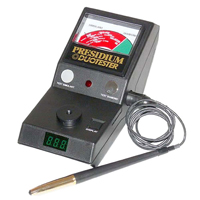 Gem Tester
Gem TesterRs. 18,000.00
To amateurs, gemologists, and professional jewelers alike, the process of identifying gemstones, especially in large quantities, is a difficult and tedious one. To complicate things even further, new varieties of simulants designed to mimic the properties of gems are constantly being developed. So how does one save themselves the time, effort, and cost of mistakes associated with confusing a simulant for a true precious stone? The answer is simple: with an electronic gemstone tester.
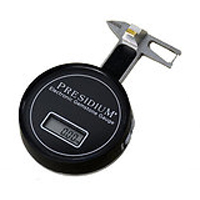 Digital Guage Meter
Digital Guage MeterRs. 17,000.00
Lorem Ipsum is simply dummy text of the printing and typesetting industry. Lorem Ipsum has been the industry's standard dummy text ever since the 1500s, when an unknown printer took a galley of type and scrambled it to make a type specimen book. It has survived not only five centuries, but also the leap into electronic typesetting, remaining essentially unchanged. It was popularised in the 1960s with the release of Letraset sheets containing Lorem Ipsum passages, and more recently with desktop publishing software.
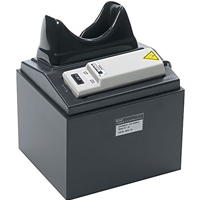 U.V Lamp short wave & long wave with Box
U.V Lamp short wave & long wave with BoxRs. 10,000.00
Ultra violet radiation has a range of wavelengths from 400nm to upto 10nm. However; the usable range is from 400nm to 200nm. Long wave U.V lamps: 410 to 300nm range. Short wave U.V lamps: 300 to 200nm range.
USES: To detect fluorescence and phosphorescence. At times to distinguish between natural and synthetics. Gives an idea about coloring elements present in the stone. Detect treatments done on the stone.
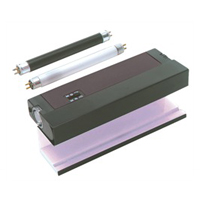 U.V Lamp short wave and long wave
U.V Lamp short wave and long waveRs. 5,000.00
Handheld UV Lamps (6 watts) are uniquely designed with an ergonomically designed handle. Select from longwave, midrange, shortwave or combination longwave and shortwave in the same lamp. Lamps are lightweight for easy handling. Durable plastic housing. Six watts. Models available with shortwave, longwave UV or a combination shortwave/longwave version. Combination shortwave/longwave version comes with a snap-on wavelength selector for switching between wavelengths.
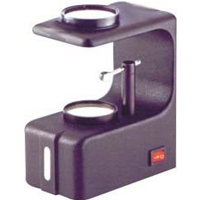 Polariscope
PolariscopeRs. 5,000.00
The polariscope may be one of the most underestimated tools in gemology. Most gemologists use it to quickly determine if the stone at hand is isotropic or anisotropic or, at best, to determine the optic character of gemstones. With some small additions, one can determine both optic character and the optic sign of a gemstone. It is also the preferred tool -- next to the microscope -- for separating synthetic amethyst from its natural counterparts (although with recent synthetics that may prove difficult). In addition, the polariscope may be very useful for distinguishing solid inclusions from negative inclusions as well as for spotting polysynthetic twinning.
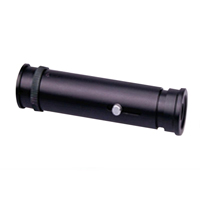 Diffraction Spectroscope
Diffraction SpectroscopeRs. 4,000.00
Lorem Ipsum is simply dummy text of the printing and typesetting industry. Lorem Ipsum has been the industry's standard dummy text ever since the 1500s, when an unknown printer took a galley of type and scrambled it to make a type specimen book. It has survived not only five centuries, but also the leap into electronic typesetting, remaining essentially unchanged. It was popularised in the 1960s with the release of Letraset sheets containing Lorem Ipsum passages, and more recently with desktop publishing software like Aldus PageMaker including versions of Lorem Ipsum Aldus PageMaker including versions of Lorem Ipsum including versions of Lorem Ipsum.
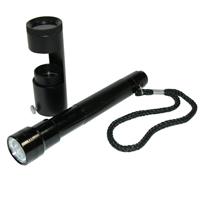 Hand Polariscope
Hand Polariscope Rs. 3,500.00
A Hand Polariscope uses polarized light for gem identification. It consists of two polarized filters, one on the top and one on the bottom of the instrument as seen in the picture to the right. Both the polarizer and the analyzer have their own vibrational planes. When the vibrational plane of the polarizer is at right angles to the vibrational direction of the analyzer, the field between them remains dark.
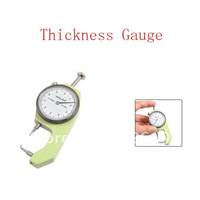 Guage Meter
Guage MeterRs. 3,000.00
The Gauge Meters are one most important medical instrument used for medical purposes. We provide the best guage flow meter to our customers as per their needs. These gauges mainly find there applications in emergency medicine. The reason for which they are known as Gauge flow meter is that it has meter on one side though which we can see the flow of reading. The guage flow meters are available in different ranges in the market.
 Gem identification made easy book
Gem identification made easy bookRs. 2,500.00
New, revised, expanded edition of the first and only book of its kind. Covers the latest gems, synthetics, treatments, and instruments. Easy to use. Practical. Non-technical. Shows how to identify diamonds, coloured gemstones, and pearls, and separate them from fakes and look-alikes. Explains what instruments are needed, how to use them, where to get them, and what should be seen for each gemstone. No science background necessary. Faster than you can imagine, anyone can learn to identify most of the gems and imitations found in the marketplace. This practical volume is the key to avoiding costly mistakes and recognising profitable opportunities.
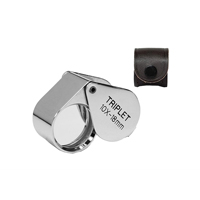 Triplet 10x
Triplet 10xRs. 1,500.00
This is the best 10x loupe for the price period. I have seen many reviews on this loupe and they all refer to the great quality for the great price. The lens on this triplet is 21 mm diameter, 19 viewable, which is almost exactly twice the viewable area of a comparable Bausch & Lomb Hastings 10x Triplet. True 3 element achromatic lens provides a bright and crisp view without color distortion. The housing is metal so it will not break like some other "cheap" hand lenses. Focal distance is 28 mm. Can be disassembled for easy cleaning. We have had a lot of requests, since we have been selling the Belomo 10x hand lens, for a lanyard that compliments it.
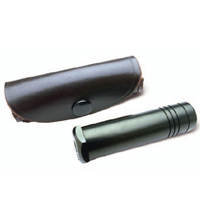 Dicroscope
DicroscopeRs. 1,500.00
The instrument is built around a calcite, equiped with a loup and an opening at each end. The calcite divides the lightray into two polarised rays. Therefore you observe two images of your stone. By simple comparison you detect basic cristallographical information of the tested mineral. You place the mineral in front of the instrument and direct it toward a light source. Then you compare the two images. Make sure to observe the mineral in different directions.
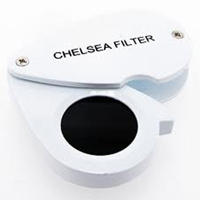 Chalsea Filter
Chalsea FilterRs. 1,500.00
It is important to recognize what a Chelsea Filter IS and more importantly, what it ISN'T. Chelsea Filters are simply dichromatic filters developed in 1934, not originally intended to be used for gemological purposes. The filter is only able to transmit light in 2 regions of the spectrum: deep red (690nm) and near yellow-green (570nm). Therefore, an object can only appear red or green or a brownish tone, resulting from a combination of red and green, when viewed through the filter.
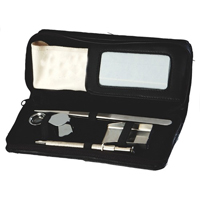 Kit for Students
Kit for StudentsRs. 800.00
Developed with the Distance Education student in mind, this carefully selected package allows you to set up your own gem testing station at home. It includes the instruments you need for gem identification and on-going technical skills development. This package is excellent for: Completing GIA Distance Education courses Developing confidence in testing and identifying gems Working freely, at your own convenience, outside of class Having the basic tools for starting a new business. Advanced diamond and gem collecting Included in the package are: Illuminator Polariscope™ with Interference Figure Sphere Operates on 120 volt only.
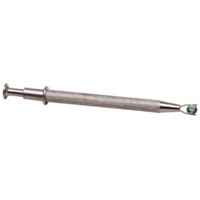 Diamond Holder
Diamond HolderRs. 500.00
Lorem Ipsum is simply dummy text of the printing and typesetting industry. Lorem Ipsum has been the industry's standard dummy text ever since the 1500s, when an unknown printer took a galley of type and scrambled it to make a type specimen book. It has survived not only five centuries, but also the leap into electronic typesetting, remaining essentially unchanged. It was popularised in the 1960s with the release of Letraset sheets containing Lorem Ipsum passages, and more recently with desktop publishing software like Aldus PageMaker including versions of Lorem Ipsum like Aldus PageMaker including versions of Lorem Ipsum.
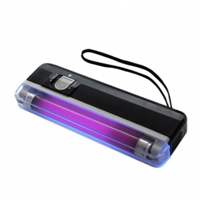 U.V Lamp Long Wave
U.V Lamp Long WaveRs. 00.00
Lorem Ipsum is simply dummy text of the printing and typesetting industry. Lorem Ipsum has been the industry's standard dummy text ever since the 1500s, when an unknown printer took a galley of type and scrambled it to make a type specimen book. It has survived not only five centuries, but also the leap into electronic typesetting, remaining essentially unchanged. It was popularised in the 1960s with the release of Letraset sheets containing Lorem Ipsum passages, and more recently with desktop publishing software like Aldus PageMaker including versions of Lorem Ipsum.








